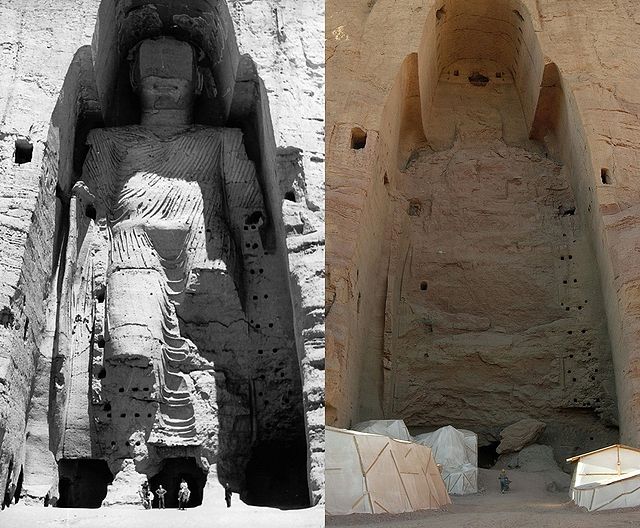Pre_Islamic_Hindu_and_Buddhist_heritage_of_Afghanistan
Hindu and Buddhist heritage of Afghanistan
Pre-Islamic history of Afghanistan
Communities of various religious and ethnic backgrounds have lived in the land of what is now Afghanistan. Before the Islamic conquest, the south of the Hindu Kush was ruled by the Zunbil and Kabul Shahi rulers. When the Chinese travellers (Faxian, Song Yun, Xuanzang, Wang-hiuon-tso, Huan-Tchao, and Wou-Kong) visited Afghanistan between 399 and 751 AD, they mentioned that Hinduism and Buddhism were practiced in different areas between the Amu Darya (Oxus River) in the north and the Indus River in the south.[1] The land was ruled by the Kushans followed by the Hephthalites during these visits. It is reported that the Hephthalites were fervent followers of the Hindu god Surya.[2]




The invading Muslim Arabs introduced Islam to a Zunbil king of Zamindawar (Helmand Province) in 653-4 AD. They took the same message to Kabul before returning to their already Islamized city of Zaranj in the west. It is unknown how many accepted the new religion, but the Shahi rulers remained non-Muslim until they lost Kabul in 870 AD to the Saffarid Muslims of Zaranj. Later, the Samanids from Bukhara in the north extended their Islamic influence into the area. It is reported that Muslims and non-Muslims still lived side by side in Kabul before the arrival of Ghaznavids from Ghazni.
"Kábul has a castle celebrated for its strength, accessible only by one road. In it there are Musulmáns, and it has a town, in which are infidels from Hind."[3]
— Istakhri, 921 AD
The first mention of a Hindu in Afghanistan appears in the 982 AD Ḥudūd al-ʿĀlam, where it speaks of a king in "Ninhar" (Nangarhar), who shows a public display of conversion to Islam, even though he had over 30 wives, which are described as "Muslim, Afghan, and Hindu" wives.[4] These names were often used as geographical terms by the Arabs. For example, Hindu (or Hindustani) has been historically used as a geographical term to describe someone who was native to the region known as India, and Afghan as someone who was native to a region called Bactria.